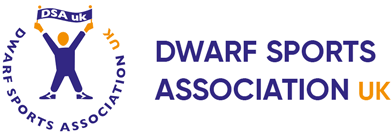New research released today (Wednesday 9 December 2015) highlights a clear need to engage disabled people in sport and physical activity at a young age. Active Beyond Education? was produced in partnership and illustrates some of the ways to prevent a decline in participation as people move into adulthood. The findings will support educators, healthcare professionals and sport providers to deliver more accessible activities for young disabled people.
Active Beyond Education? was commissioned by six of the UK’s National Disability Sports Organisations(NDSOs) – British Blind Sport, Cerebral Palsy Sport, Dwarf Sports Association UK, LimbPower, UK Deaf Sport and WheelPower, in partnership with the English Federation of Disability Sport and supported by Sport England’s Inclusive Sport Fund. The NDSOs will use the findings to shape future provision of sport and physical activity for young disabled people and support more people with specific impairments to be active.
The research explores young disabled people’s experiences of sport and physical activity, during their transition from education to adulthood. Key findings include why disabled people do and do not engage in sport and physical activity as they move on from education Internal factors (such as individual physical and psychological capability) and external factors (like access to opportunities) play a key role in influencing future participation. The report highlights:
- Young disabled people can struggle to take part in sport and physical activity due to a deterioration or change in their physical condition.
- Young disabled people often lack ‘life skills’ such as confidence, independence and resilience. These skills can be crucial in enabling them to seek physical activity opportunities outside of the school environment.
- Participation in sport and physical activity is dependent on the available opportunities meeting a young disabled person’s motivations to take part. These motivations can often change during the transition from education to adulthood.
- A number of key external factors impact a young disabled person’s opportunity to engage in sport during the transition period. These include access to sport inside and outside of school, support received from family and friends, availability of adaptive support, equipment and other resources.
One of the biggest declines in sports participation of disabled people occurs around the time they leave education, between the ages of 16 and 25 (Sport England Active People Survey 8, 2014). As well as understanding the reasons why disabled people do and do not participate in sport during this period, the report also outlines some specific recommendations for educators, healthcare professionals and sport providers. These note some of the ways in which they can provide better opportunities, to maintain activity levels of young disabled people after they leave education:
- Healthcare professionals (e.g. physiotherapists) should be encouraged and guided to recommend suitable sport and leisure activities to young disabled people.
- Training and guidance for educators should include advice on how to enable young disabled people to better engage in PE lessons. Such guidance should include strategies for developing young disabled people’s ‘life skills’.
- Providers should reach out and engage young disabled people in sport and physical activity earlier. Either while they are still in education or in settings where they feel comfortable.
- Greater access for individuals and providers to bid for funds to support sport and physical activity participation of young disabled people during the transition from education to adulthood.
Commenting on the findings, the National Disability Sports Organisations working group said:
“The transition from education to adulthood is a crucial time in all people’s lives. This period can be particularly challenging for young disabled people. It is also a time when a large number of disabled people disconnect from sport.
“These research findings demonstrate a clear need to engage disabled people in sport and physical activity at a young age, in order to address this decline in participation. When such opportunities are not taken, it becomes much harder to re-engage individuals in sport and physical activity in later life.
“We want to use this research to support educators and providers to deliver more accessible sporting opportunities for young disabled people and encourage them to maintain an active lifestyle into adulthood.”
Sport England Director of Insight, Lisa O’Keefe, said:
“Given the overwhelming benefits to being active, it’s important that sport and fitness remains a practical choice for disabled people, at every stage of their life. This new research offers a helpful view of young disabled people’s experience of sport and fitness, and practical suggestions on how to build exercise into our lives.”
Moving forward, the National Disability Sports Organisations will use this research to work with educators, healthcare professionals and sport providers. To further develop more comprehensive, long-term strategies to address the current decline in young disabled people’s participation in sport during the transition from education to adulthood.
Active beyond education? is available in both accessible PDF and plain Word format.
http://www.efds.co.uk/resources/research/4765_active_beyond_education

